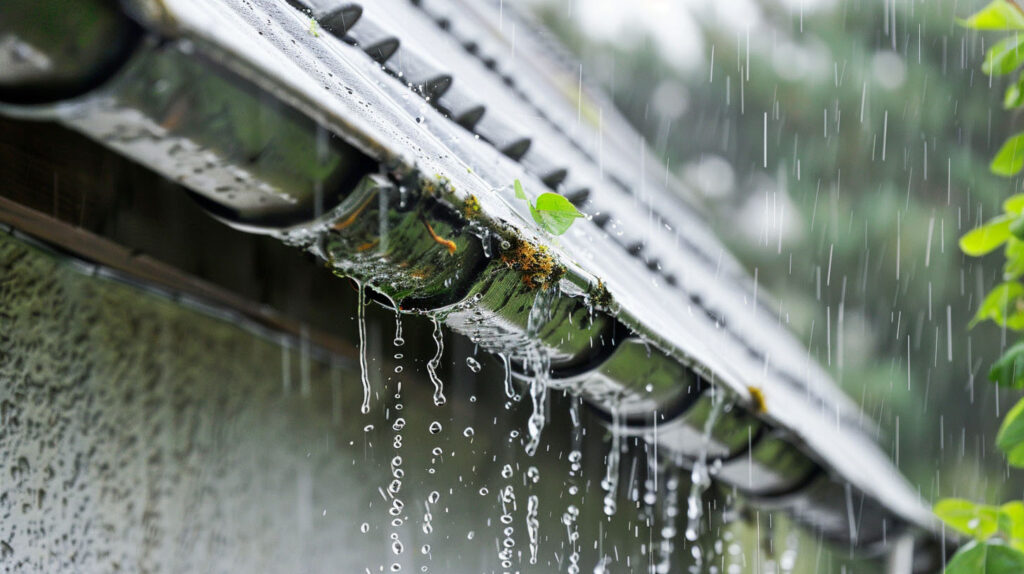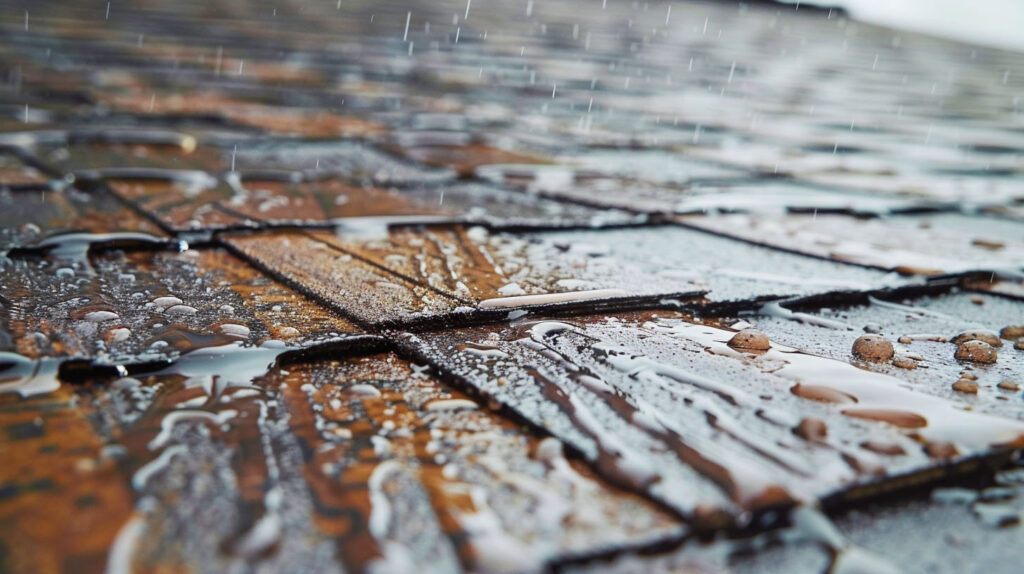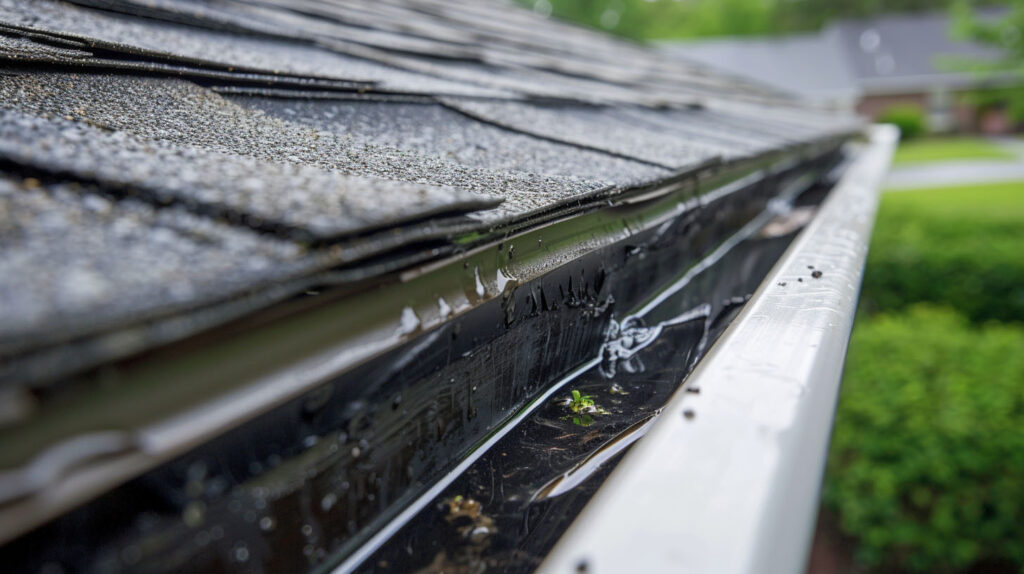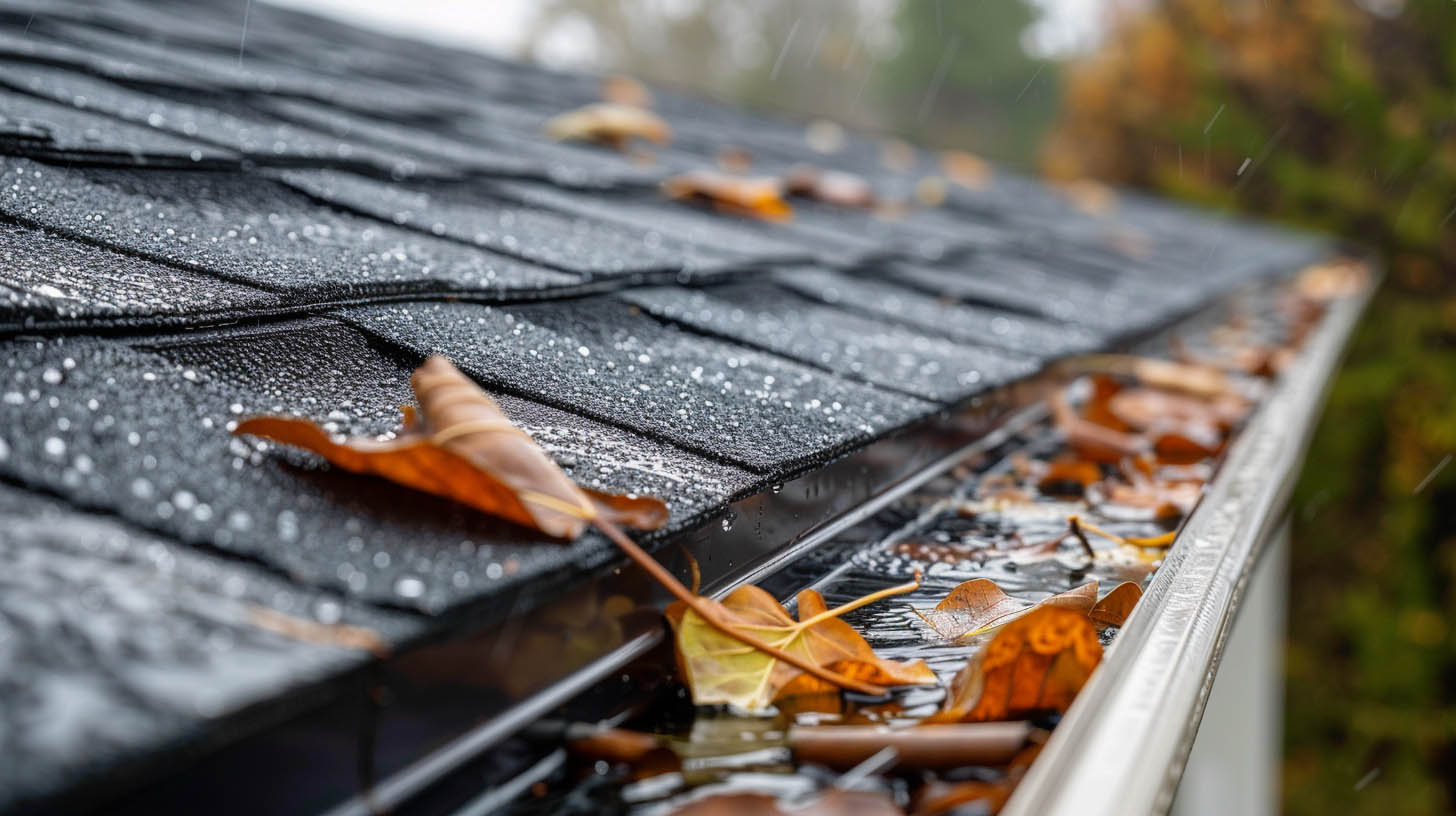Why Poor Drainage Can Ruin Even a New Roof
Even a brand-new roof is not immune to the damage poor drainage can cause. Without an effective system, water that should flow away seamlessly ends up pooling and seeping into your roof. Over time, this leads to significant problems, such as water damage, structural issues, and mold growth. At Specialist Roofing & Repair, we’ve seen firsthand how drainage issues can ruin otherwise robust roofing systems. Understanding drainage challenges is essential to protecting your investment and extending the lifespan of your roof in Long Beach, CA.
Understanding Roof Drainage: Why It Matters for New Roofs
Roof serves a vital purpose—it directs water flow away from the roof, preventing leaks and pooling that could compromise your home’s integrity. Simply put, a roof system is the first line of defense against water damage during heavy rains.
Whether you’ve just had a roof installed or you’re maintaining an older one, drainage directly impacts how well your roofing materials stand up over time. Let’s explore how these systems work and why choosing the right solution matters for your roof’s health.
How Roof Drainage Systems Work
An effective flat roof drainage systems is essential for managing water flow on your roof. Typically, these systems are designed to redirect water away from the roof’s surface via internal drains or downspouts. The roof slope plays a crucial role in facilitating proper drainage, preventing water accumulation that can lead to extensive damage over time. Regular inspections ensure that no debris obstructs the roof drains, maintaining the roof’s lifespan and protecting the structural integrity of your home or commercial building from potential drainage issues.

Common Types of Roof Drainage Solutions
Various roof solutions are essential for maintaining the integrity of roofing systems. Typically, roof drainage is managed through internal drains, scuppers, and gutters, which effectively channel water flow. Internal drains, strategically placed, minimize water accumulation, while scuppers allow for direct water runoff. Additionally, incorporating a proper roof slope ensures efficient drainage, reducing the risk of water pooling. Employing these best practices promotes a longer lifespan for your roof and prevents serious drainage issues, safeguarding both your home’s foundation and overall structural health.
The Hidden Risks of Poor Drainage on New Roofing
What makes matters worse is that these issues often go unnoticed until become serious. Next, we’ll discuss the two most common risks—structural decay and interior damage—to help you understand what’s at stake.
Water Damage and Structural Decay
Water accumulating on flat roofs due to inadequate drainage can lead to significant water damage over time. This consistent exposure creates a perfect environment for structural decay, which compromises the integrity of roofing materials and even the home’s foundation. Without an efficient system, moisture may seep into the structure, leading to deterioration and expensive repairs. , especially in extreme cases. Regular maintenance and inspections are essential to identify potential drainage issues before extensive damage occurs, ensuring the roof’s lifespan is maximized and costly replacements avoided.
Mold Growth and Interior Leaks
Moisture accumulation due to inadequate drainage creates the perfect environment for mold growth, compromising both aesthetics and health. Water leaks from the roof can lead to significant interior damage, affecting walls, ceilings, and insulation. As the roofing materials deteriorate, the structural integrity of the entire building may be at risk. Regular inspections and maintenance of the roof’s system are essential to prevent these issues. Addressing problems promptly ensures a longer lifespan for your roof and protects your home’s foundation.

Signs Your Roof Drainage Is Failing
Early detection is key to preventing costly repairs caused by drainage issues. Visible signs, such as pooling water or overflowing gutters, indicate your roofing system isn’t functioning properly. Neglecting these early signs could result in water damage and structural problems.
Being proactive is crucial. Regular inspections can help you identify red flags like debris accumulation, drainage blockages, and water stains. Addressing these indicators promptly can keep your roof and home protected for the long haul.
Visible Pooling and Overflow Issues
Visible pooling often indicates inadequate drainage, particularly on flat roofs. When water accumulates, it creates immense stress on roofing materials, leading to potential drainage issues. Overflow problems may arise from blocked internal drains or a lack of proper roof slope, causing direct water to compromise the roof’s structural integrity. Recognizing these signs of poor drainage early can prevent costly repairs and extend the lifespan of your roof. Regular maintenance and inspections are essential to ensure effective systems function correctly.
Early Warning Signs to Watch For
Identifying early warning signs is crucial for maintaining your roof’s integrity and preventing costly repairs. Look for water stains on ceilings, which may indicate leaks stemming from inadequate drainage. Additionally, pooling water on the roof’s surface can lead to serious problems, compromising the longevity of your roofing materials. Be vigilant for any mold growth or odors emanating from your interior spaces, as these can signal persistent moisture issues. Regular inspections will help catch these issues before escalate, ensuring peace of mind.
What’s Next
Inadequate roof drainage can lead to significant, often unnoticed problems that jeopardize your new roofing investment. As an Owens Corning Platinum Preferred Contractor and a Polyglass Quantum Contractor, we emphasize the importance of regular inspections and proactive maintenance to identify signs of poor drainage early on. Addressing potential drainage issues promptly ensures the longevity of your roofing materials and maintains the structural integrity of your home. With our BBB A+ Rating, we understand that effective systems can save homeowners from costly repairs and extensive damage down the line, providing peace of mind for years to come.

Frequently Asked Questions
How can Specialist Roofing & Repair help fix drainage issues?
Specialist Roofing & Repair offers expert solutions for problems, starting with a thorough roofing inspection to identify issues. Our team ensures effective water flow through customized systems and recommends regular inspections for lasting protection.
What will happen if there is no proper drainage system?
Without a proper system, water accumulates, causing severe water damage, structural issues, mold growth, and roof leaks. Over time, it becomes an expensive problem to fix and may even necessitate a complete roof replacement.
What is the number one cause of roof failure?
Poor drainage is the leading cause of roof failure. Inadequate drainage leads to water pooling, which accelerates material degradation and compels costly repairs or even complete roof replacement. Regular maintenance is crucial to avoid these problems.
Read our blog: How to Spot Roof Damage From the Ground



